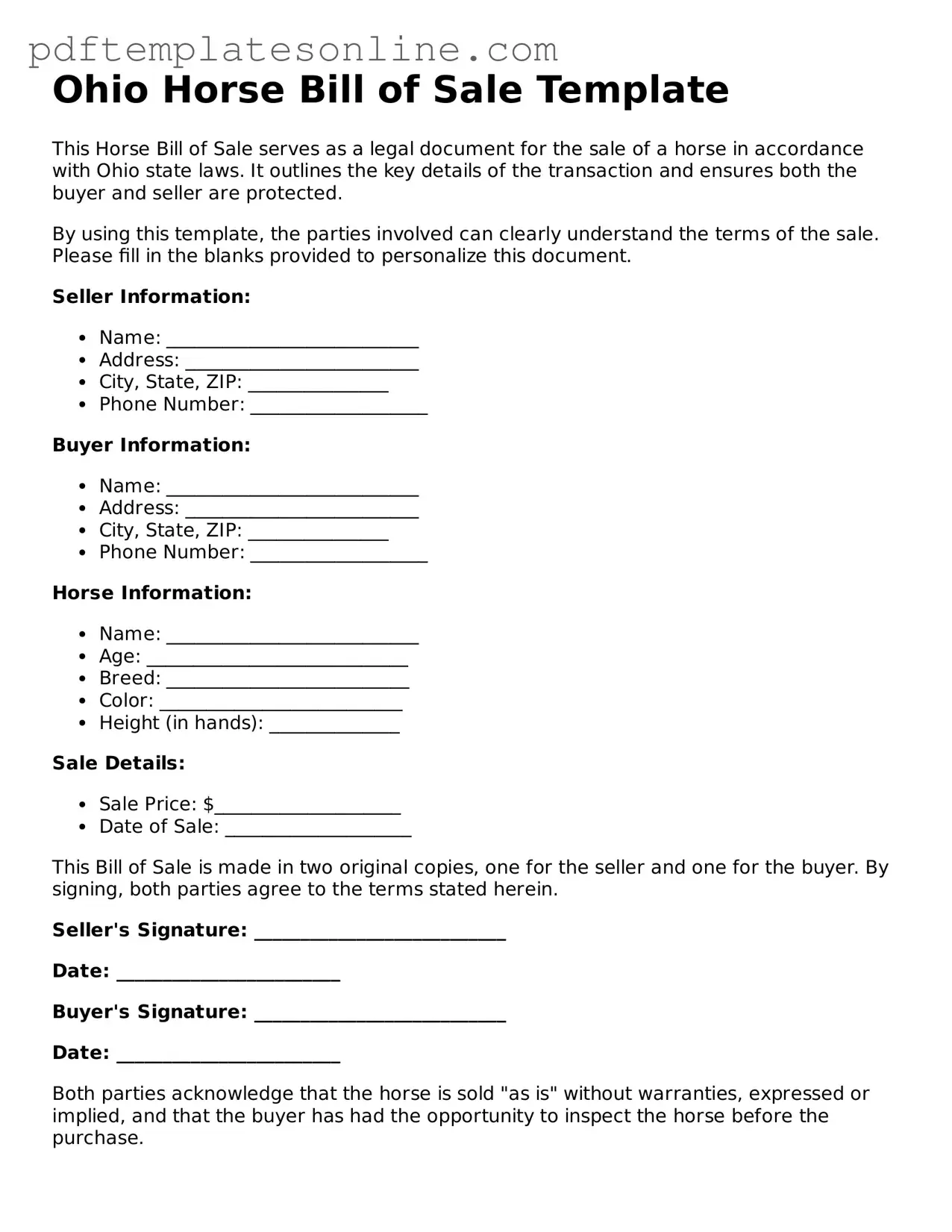When filling out the Ohio Horse Bill of Sale form, many people make common mistakes that can lead to confusion or legal issues down the line. One frequent error is not providing complete information about the horse being sold. Details such as the horse's name, breed, age, and registration number are essential. Omitting any of this information can create problems for both the buyer and seller later.
Another mistake is failing to include the seller's and buyer's contact information. Both parties should provide their full names, addresses, and phone numbers. This information is crucial for communication and for any future reference. If this data is missing, it can complicate matters if any disputes arise after the sale.
People often overlook the importance of signatures. Both the seller and buyer need to sign the form to make the sale official. Without signatures, the document may not hold up in court if there’s a disagreement. It's a simple step, but one that is frequently neglected.
Additionally, many individuals forget to specify the terms of the sale. This includes the purchase price and any conditions related to the sale, such as whether the horse is sold “as is.” Clearly stating these terms helps prevent misunderstandings and ensures that both parties are on the same page.
Finally, some people fail to keep a copy of the completed bill of sale. After filling out the form, both parties should retain a copy for their records. This document serves as proof of the transaction and can be vital if questions arise later. Keeping a copy ensures that everyone has access to the same information.
